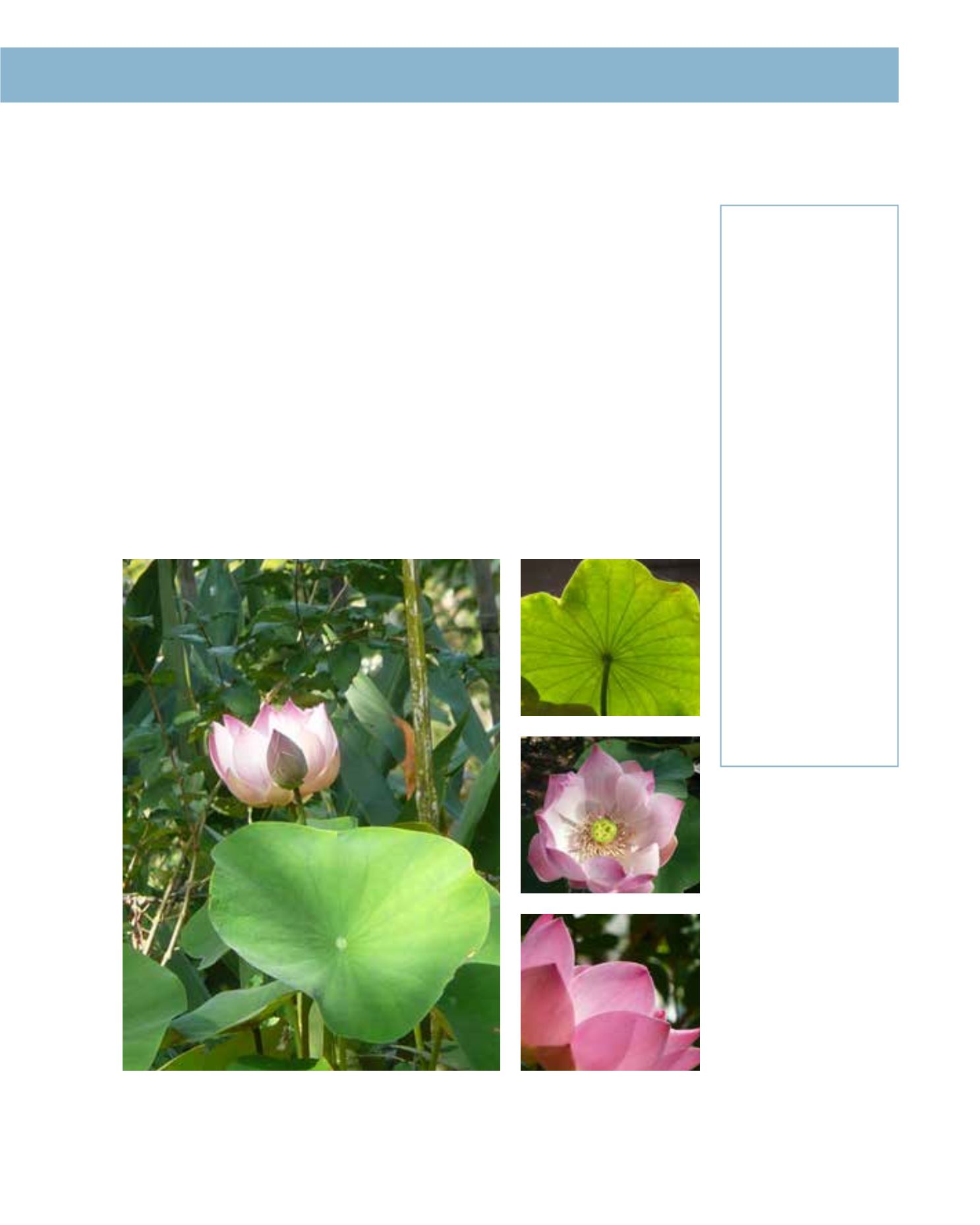

GENERAL
Origin
:
sub-tropical,
tropical
Humidity
:
semi-humid, very
humid, extremely
humid
Propagation :
sowing and
pricking out,
division
Maintenance :
moderate
CONDITIONS
Urban climate :
vulnerable
Dessication :
vulnerable
Stagnant water :
resistant
Salinity/ppm :
low (700 ppm)
Hardiness
:
+3°C
SHAPE
Type
:
aquatic
Height
:
0.4 m-1.5 m
Spread
:
2 m
Foliage
:
evergreen
FLOWER
Colour
:
white, pink,
yellow
Size
:
18 cm - 35 cm
Period
:
April - August
Smell
:
scented, strong,
flower, sweet
FRUIT
Type of fruit :
capsule
Fruit size
:
20 cm
Toxicity
:
edible when
processed
Native in most countries of Asia, the Lotus plant with its large, showy, water-lily-like flowers, is
an aquatic perennial, and is planted in the soil of a pond or lake with its leaves floating on top of
the water. It is found in Arriyadh only in sheltered gardens with some shade from the sun. This
is an iconic plant which creates a beautiful aspect when in full bloom. The flowers rise on thick,
long stems up to 40 cm above the water. Its leaves often reach a height of about 150 cm and may
be as large as 60 cm in diameter, while the showy flowers can be up to 20 cm in diameter. The
beautiful and fragrant flowers, ranging in hue from white to hot pink, open in the morning and
petals fall in the afternoon. The leaves are sometimes, and flowers always, raised above the water
surface. The fruits are conical capsule with openings looking like the rose of a watering can, and
are also decorative. When the seeds are ripe, the pod tips them through the openings into the
water. The Lotus grows best in calm, fresh water: it requires many nutrients good garden; non-
manured soil is suitable. Fast growing, the Lotus is best contained in a large pond in deep water,
but it is also very effective in a large water jar. Propagation is by seed or root division. As in its
native countries, the leaves of Lotus will turn brown after frost, but the plant is not damaged and
revives in spring. Maintenance is moderate, if a tidy effect is desired it becomes intensive, and
plants must be fertilised during the growing season.
210
Nelumbo nucifera,
Nelumbonaceae
East Indian Lotus,
Sacred Indian Lotus
















